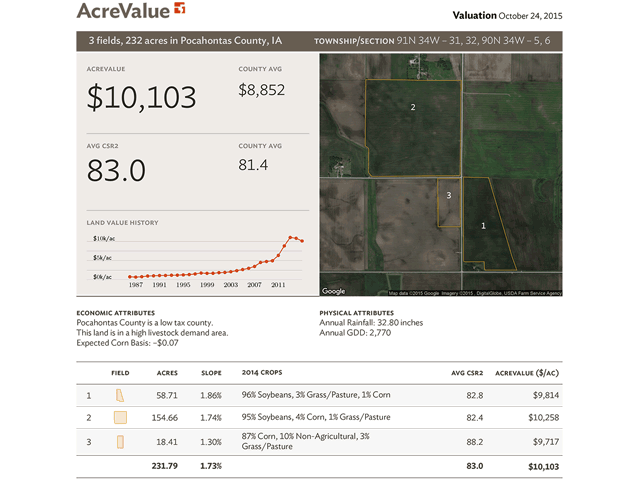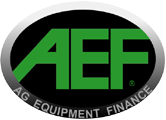Online real estate listings such as Zillow.com and Realtor.com revolutionized the housing market this century. Today pick any residential address in the U.S. with those free online services and you’ll get rough estimates of the home’s current value, its number of bedrooms, square footage, property taxes, the quality of its schools and the neighborhood’s crime statistics. Now technology promises to bring the same transparency to the $2.4 trillion farm real estate market.
Today pick any residential address in the U.S. with those free online services and you’ll get rough estimates of the home’s current value, its number of bedrooms, square footage, property taxes, the quality of its schools and the neighborhood’s crime statistics. Now technology promises to bring the same transparency to the $2.4 trillion farm real estate market.
See how it works! www.acrevalue.com
INSIDER ADVANTAGE
Today’s farmland markets are much like home real estate a decade ago, said Tashjian, former product manager at the residential real estate site Trulia.com. Farm real estate buyers and owners must depend on word-of-mouth tips and broker networking to find out what’s really going on. Lack of information is compounded by the fact that only about 1% to 2% of farmland transfers hands each year.
What’s even more challenging is how few land sales are reported in public forums. At least 50% of farmland transfers are private transactions, versus 8% in residential real estate, Tashjian estimated. That means plenty of deals between landlords and long-time tenants, heirs and family aren’t widely disseminated.
West of the Mississippi, even professional ag appraisers complain they have difficulty ascertaining real sales prices because property records remain a closely guarded secret. Texas law even forbids disclosure of real estate sales information. Counties in many states don’t yet publish records online, requiring someone to physically visit their offices.
FREE AND FAST
With AcreValue.com, anyone can access rough estimates of Grain Belt farmland values, drilled down to actual field boundaries instead of generic counties or statewide averages. While not a substitute for appraisals, it offers an impartial estimate of what farms should be worth based on their expected productivity and income generation. It doesn’t predict what an emotionally charged farmer-next-door would pay at auction.
“Even if the formulas aren’t the beat-all-to-end-all solution, they’re helping people be better informed about what land is worth,” said Dave Nebel, a professional appraiser who heads Hertz Appraisal Services in Nevada, Iowa. When Hertz compared AcreValue’s estimates to its own appraisals on the same properties, it found values differing by 5% to more than 20%.
AcreValue, the most robust tool at the moment, publishes soil and cropping information on 46 states, but currently estimates land values only for Iowa, Illinois, Indiana and Minnesota. More states and cash rent estimates are likely to come in the future.
The service marries information from USDA’s National Cooperative Soil Survey (which measures the productive capacity of underlying soils), state productivity indexes; the National Agricultural Statistics Services’ Cropland Data Layer (satellite imagery of crops planted on actual fields); the Farm Service Agency’s common land unit boundaries; as well as public real estate survey data, which indicates land value trends.
Land quality is only one factor in valuation. AcreValue supplements that with proprietary adjustments for location, interest rates, the county’s tax environment and expected grain basis. At the moment it can’t measure improvements, such as tile drainage or irrigation. It may need a feature for current owners to correct for that data, much like Zillow permits homeowners to correct valuations if they believe estimates are flawed. Article via DTNprogressivefarmer by Marcia Zarley Taylor.

